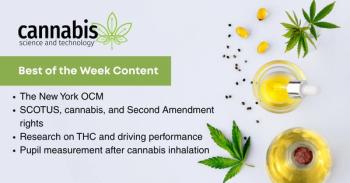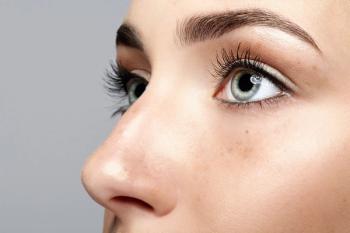
Cannabis Science and Technology
- September 2022
- Volume 5
- Issue 7
- Pages: 28-30
The Case for THCA and Other Minor Cannabinoids
This article examines why we should be studying the cannabinoids beyond THC and CBD in order to explore their potential medical value.
In legal cannabis markets, two molecules dominate the conversation for both adult use and medical use cannabis: delta-9-tetrahydrocannabinol (Δ9-THC) and cannabidiol (CBD). Δ9-THC is the dominant cannabinoid found in most adult-use cannabis. Many Cannabis Sativa cultivars have been selectively bred for it, and CBD is the most commonly found cannabinoid in the supplemental market. Both molecules have had successful drug formulations developed for specific medical conditions such as epilepsy (Epidolex; CBD) and reduce nausea from medical conditions or drugs (Dronabinol; Δ9-THC). While these drugs are an important step toward legitimizing cannabinoid-based medicines, they reduce the significance of the other 400 chemical entities within the plant, such as terpenes and other phytocannabinoids. More importantly, the synergistic properties of the molecules working together don’t exist in our current adult-use and medical products. These molecules working together may have led to many of the anecdotal medical successes attributed to Cannabis Sativa. It is a major shift away from the traditional single-molecule compounds in the pharmaceutical industry. While we do not know the effects of every molecule found within the plant, we have research that shows many phytocannabinoids beyond Δ9-THC and CBD have medical benefits. These molecules include the precursor to Δ9-THC, tetrahydrocannabinolic acid (THCA), and a long list of lesser-known cannabinoids such as cannabinol (CBN), cannabigerol (CBG), cannabichromene (CBC), and more.
Exploring cannabinoids beyond Δ9-THC and CBD will allow us to leverage the compounds that Cannabis Sativa contains fully. This is important for furthering the pharmaceutical and herbaceutical medicines brought to market or commoditized. When using most cannabinoid-based drugs, there is a significant side effect: inebriation or being “high.” While individuals who use cannabis frequently don’t mind or enjoy the psychoactive effects of cannabis, it is a side effect that many people don’t enjoy. As with all modern medicines, some side effects are to be expected, but the psychoactive effects of cannabis specifically come from Δ9-THC. Suppose we can develop cannabinoid medicines that reduce or potentially eliminate the psychoactive effects. In that case, we can engage medical professionals, legislatures, and individuals skeptical of the drugs because of this particular side effect. We may do this without losing the therapeutic efficacy of current formulations by exploring other phytocannabinoids present in cannabis.
THCA is the most abundant phytocannabinoid found in the resin glands of Cannabis Sativa. THCA is typically extracted from the plant and converted to Δ9-THC for its psychoactive properties by breaking the carboxyl group off of the molecule through decarboxylation. THCA has potential for medical value, and the research suggests that we should consider it for product development. An article published in the National Library of Medicine showed that THCA dosed at 0.05/0.5 mg/kg may be more effective at reducing lithium chloride (LiCl) induced vomiting compared to Δ9-THC, which did not suppress nausea at the same dosage
The cannabinoid called CBN has gained much traction in the commoditized market of both adult-use cannabis and nutraceuticals. In fact, 5-10 mg of CBN can be found in many products marketed as “sleep” or “rest” aides, and unsurprisingly a study published in November 2021 (
CBC, a nonpsychotropic cannabinoid, has different observed effects that need further research. Like CBN, “CBC interacts with transient receptor potential cation channels that inhibit endocannabinoid inactivation, and stimulate the CB2 receptors, but not CB1 receptors” (
The list of cannabinoids with potential medical value doesn’t stop here, as relevant research has been performed on other cannabinoids. CBG, which is the decarboxylated form of cannabigerolic acid (CBGA), the “parent molecule” for all other cannabinoids, has promising new research regarding the therapeutic potential in treating neurological disorders. In 2022, diseases such as Huntington’s disease, Parkinson’s disease, multiple sclerosis (MS), and inflammatory bowel disease (IBD), could be reduced in severity based on the in vitro and animal model studies when intaking CBG (
Cannabis Sativa is among a remarkable variety of plants that may be able to provide us with a broad range of medical developments ranging from a sleep aid to pain management. While we are currently using phytocannabinoids in a way that is very similar to traditional pharmaceuticals—one molecule targeting one ailment or symptom—the future of cannabinoid drugs must explore all of what the plant has to offer. Δ9-THC and CBD have paved a pathway for research—truly valuable research—to become more mainstream in the scientific community. These two molecules have also brought mainstream media attention to the cannabinoid medicines with products specifically designed to treat adolescent epilepsy. But to move cannabinoid-based medicines forward, we must look beyond the obvious most dominant cannabinoids and into the relatively uncommon ones. To provide efficacious medicines with minimal side effects, we need to be exploring the synergistic effects of primary and minor cannabinoids. The cannabis research should not stop here; we must also learn how the different terpene ratios interact with the various cannabinoids.
References
- E.M. Rock, R.L. Kopstick, C.L. Limebeer, and L.A. Parker, Br. J. Pharmacol. 170(3), 641–648 (2013).
https://doi.org/10.1111/bph.12316 .https://www.ncbi.nlm.nih.gov/pmc/articles/PMC3792001/ . - R. Moldzio, T. Pacher, C. Krewenka, B. Kranner, J. Novak, J.C. Duvigneau, and W.D. Rausch, Phytomedicine 19(8-9), 819–824 (2012)..
https://doi.org/10.1016/j.phymed.2012.04.002 .https://pubmed.ncbi.nlm.nih.gov/22571976/ . - X. Nadal, C. Del Río, S. Casano, B. Palomares, C. Ferreiro-Vera, C. Navarrete, C. Sánchez-Carnerero, I. Cantarero, M.L. Bellido, S. Meyer, G. Morello, G. Appendino, and E. Muñoz, British Journal of Pharmacology 174(23), 4263–4276 (2017)..
https://doi.org/10.1111/bph.14019 .https://bpspubs.onlinelibrary.wiley.com/doi/10.1111/bph.14019 . - J.H. Walsh, K.J. Maddison, T. Rankin, K. Murray, N. McArdle, M.J. Ree, D.R. Hillman, and P.R. Eastwood, Sleep 44(11), zsab149 (2021).
https://doi.org/10.1093/sleep/zsab149 .https://pubmed.ncbi.nlm.nih.gov/34115851/ . - E.B. Russo and J. Marcu, Advances in Pharmacology, "Chapter Three - Cannabis Pharmacology: The Usual Suspects and a Few Promising Leads," 80, 67-134 (2017).
https://www.sciencedirect.com/science/article/abs/pii/S1054358917300273 . - N. Shinjyo and V. Di Marzo, Neurochemistry International 63(5), 432–437 (2013).
https://doi.org/10.1016/j.neuint.2013.08.002 .https://www.sciencedirect.com/science/article/abs/pii/S0197018613002106?via%3Dihub . - S. Maione, F. Piscitelli, L. Gatta, D. Vita, L. De Petrocellis, E. Palazzo, V. de Novellis, and V. Di Marzo, Br. J. Pharmacol. 162(3), 584–596 (2011).
https://doi.org/10.1111/j.1476-5381.2010.01063.x .https://bpspubs.onlinelibrary.wiley.com/doi/10.1111/j.1476-5381.2010.01063.x . - G.T. DeLong, C.E. Wolf, A. Poklis, and A.H. Lichtman, Drug Alcohol Depend. 112(1-2), 126-133 (2010). doi:10.1016/j.drugalcdep.2010.05.019.
https://www.ncbi.nlm.nih.gov/pmc/articles/PMC2967639/ . - R. Nachnani, W.M.Raup-Konsavage, and K.E. Vrana,The Journal of Pharmacology and Experimental Therapeutics, 376(2), 204–212 (2021).
https://doi.org/10.1124/jpet.120.000340 .https://jpet.aspetjournals.org/content/376/2/204 . - A.P. Brogan, L.M. Eubanks, G.F. Koob, T.J. Dickerson, and K.D. Janda, Journal of the American Chemical Society 129(12), 3698–3702 (2007).
https://doi.org/10.1021/ja070022m .https://pubs.acs.org/doi/10.1021/ja070022m . - A. Abioye, O. Ayodele, A. Marinkovic, R. Patidar, A. Akinwekomi, and A. Sanyaolu, Journal of Cannabis Research 2(1), 6 (2020).
https://doi.org/10.1186/s42238-020-0016-7 .https://jcannabisresearch.biomedcentral.com/articles/10.1186/s42238-020-0016-7 .
About the Author
Anthony DeMeo is the Director of R&D at Somai Pharmaceuticals in Lisboa, Portugal. Direct correspondence to:
How to Cite this Article:
A. DeMeo, Cannabis Science and Technology® Vol. 5(7), 28-30 (2022).
Articles in this issue
about 3 years ago
Does Extract Type Make a Difference in Cannabis Edibles?about 3 years ago
Energy and Elements, Part I: Understanding Atomic SpectroscopyNewsletter
Unlock the latest breakthroughs in cannabis science—subscribe now to get expert insights, research, and industry updates delivered to your inbox.





